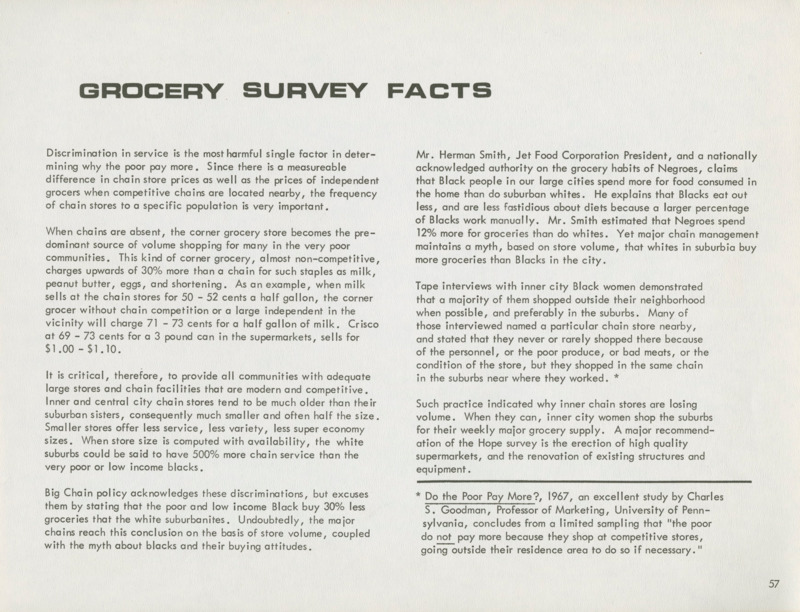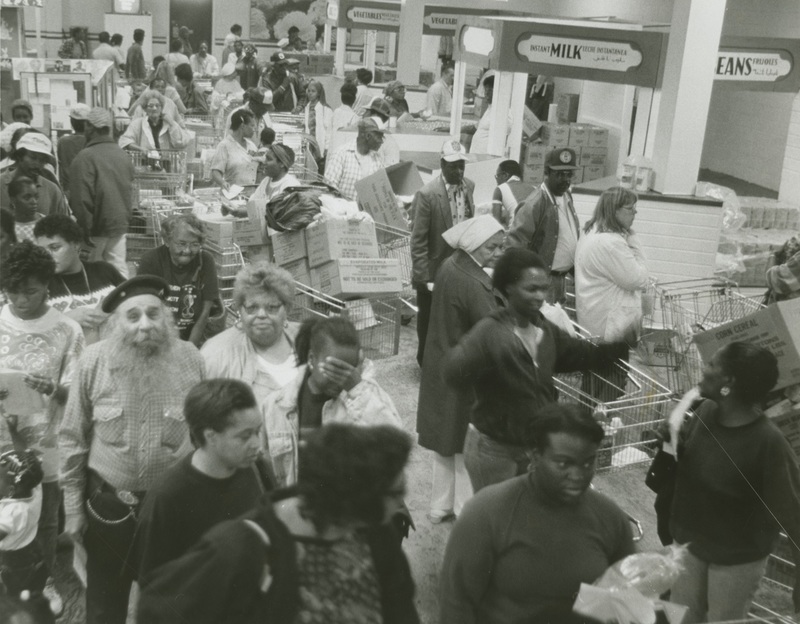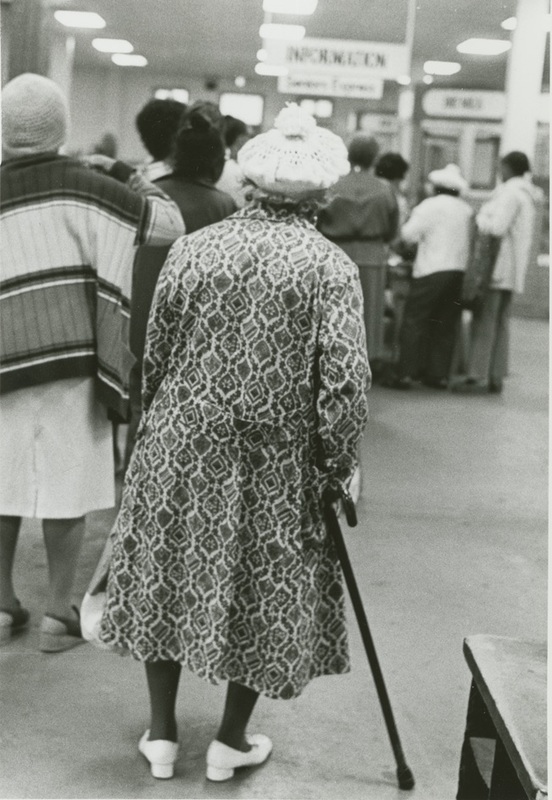HOPE 68 AND COMMUNITY RESPONSE
Many community groups formed after the Unrest, giving the city’s citizens a greater voice to address the area’s complex problems. Focus: HOPE took on issues of poverty and racism to create practical solutions that benefited those most affected by the Civil Unrest. Their respect for all Detroiters and frank talk on racism in the city made them one of the most effective community groups in Detroit.
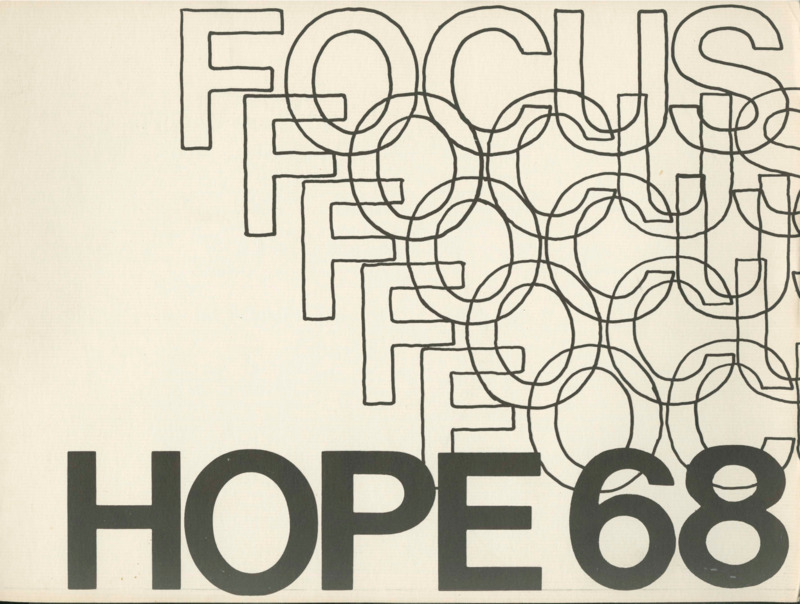
Focus: HOPE investigated the high cost of food and medicine’s role in building urban frustration. With Wayne State University, they conducted a study of the costs lower-income neighborhoods paid for groceries and prescription drugs. The comprehensive findings illuminated the high cost of being poor, lack of choice in products, and underlying causes for these inequities. The breadth of both qualitative and quantitative data revealed that the difference in services often fell along racial lines. The survey was highly influential and brought national attention to a central cause of the 1967 Civil Unrest. Source: Focus: HOPE Records, Box 4, folder 15.
Click the file to see the full report.
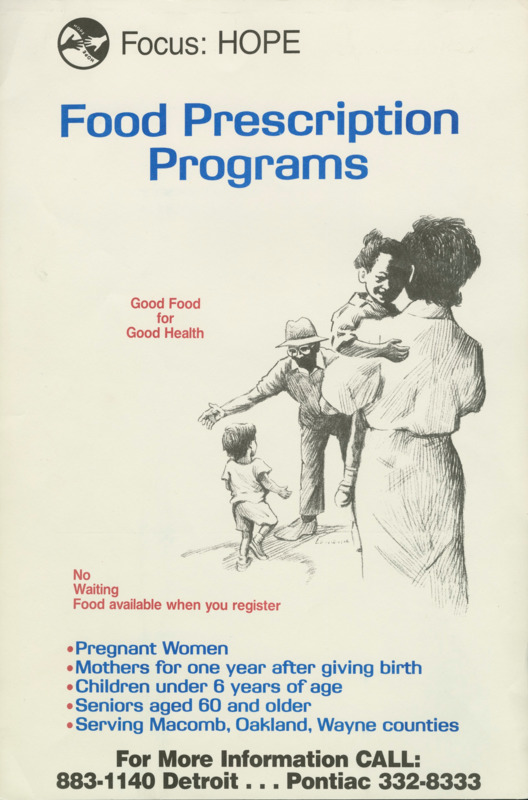
HOPE Food Prescription Programs poster. Undated. The HOPE 68 report demonstrated Focus: HOPE’s work to highlight issues of race and poverty. In 1971, the State of Michigan named them the host agency for the Commodity Supplemental Food Program in Wayne County. This program provided food for pregnant women, mothers, and young children. Focus: HOPE continues to operate the program to this day. Source: Focus: HOPE Records, Audiovisual folder.
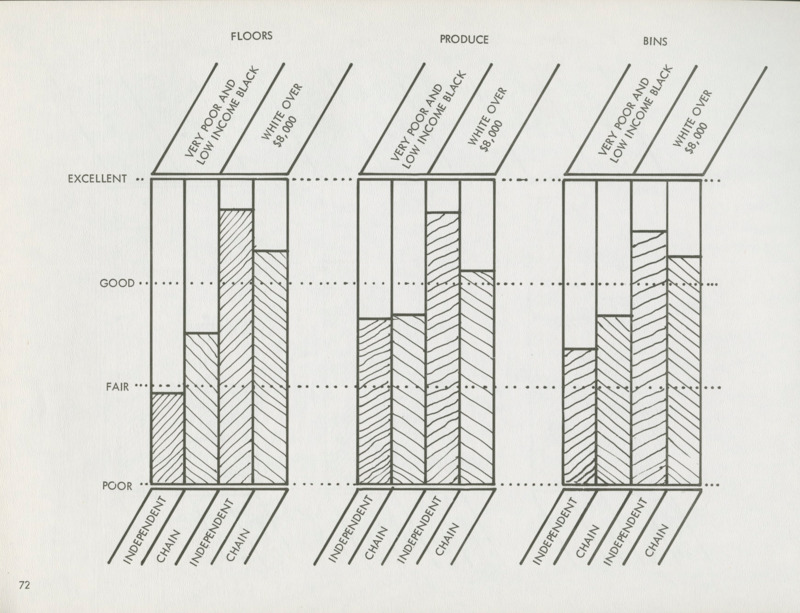
Graphs from HOPE 68 on grocery store conditions in “very poor and low income black” versus “white over $8,000” areas. Source: Focus: HOPE Records, Box 4, folder 15.
How has access to groceries improved or worsened in Detroit since the 'HOPE 68' report? Along what lines (geographic, racial, calss, etc.) is access to groceries and medicine drawn today?
Divergent Perspectives
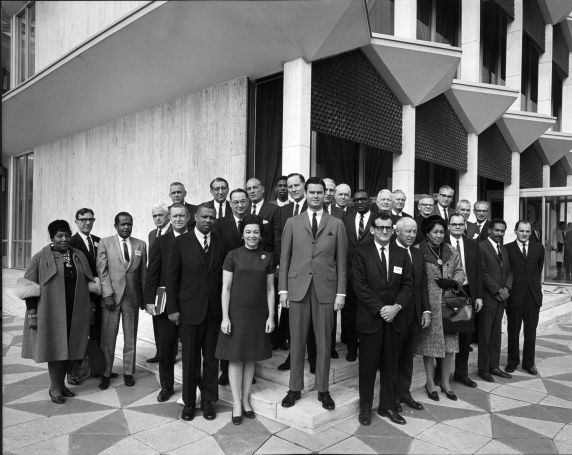
The New Detroit Committee was formed as an immediate reaction to the Civil Unrest by Governor Romney, Mayor Cavanagh, and businessman J. L. Hudson. The organization funded many programs and events, including assistance to Focus: HOPE for HOPE 68. Though the group was meant to represent a cross-section of community leaders, critics felt New Detroit fell short in adequately representing the city’s Black residents.
Was New Detroit universally well-regarded? Where might you look to find out?

City-Wide Citizens Action Committee flyer. 1967. The CCAC was led by the Reverend Albert B. Cleage, noted political and religious activist who launched the Black Christian National Movement in 1967. Source: NAACP Detroit Branch Records, Box 3, folder 8.
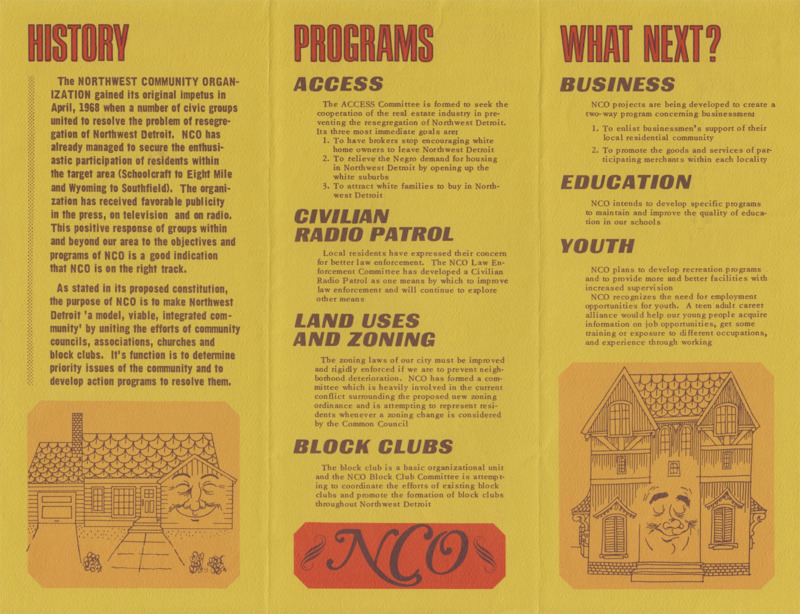
Northwest Community Organization pamphlet. An example of a community organization created post-1967 by residents to combat the root causes of the Unrest through positive action. Source: Mel Ravitz Papers, Box 25, folder 144. Click to open the document and read its contents.
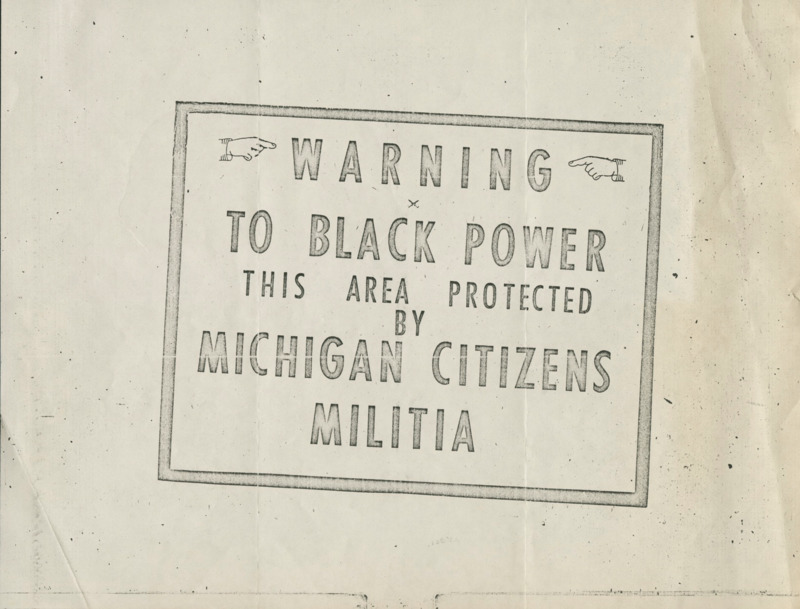
Michigan Citizens Militia flyer. Handed out in Birmingham, MI, this flyer reflects the level of animosity felt throughout many of Detroit’s majority white suburban areas towards Detroit and its Black population in the wake of the Civil Unrest. Source: Fair Housing Ordinance in Birmingham, Michigan Campaign Collection.
What do you think was root cause of racially charged and hostile messages like this? Given the opportunity, how would you address such an antagonistic community divide?

